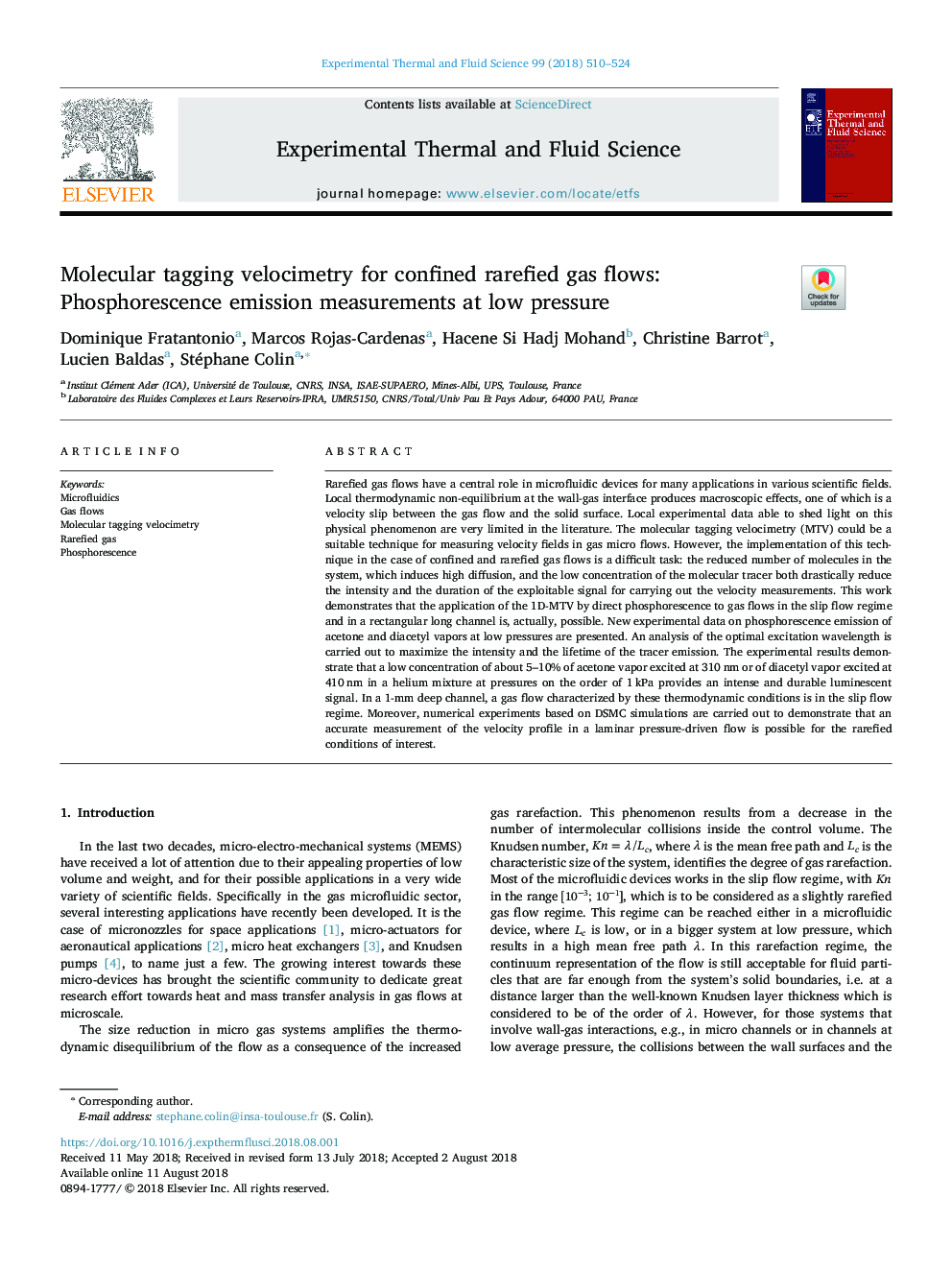| Article ID | Journal | Published Year | Pages | File Type |
|---|---|---|---|---|
| 11003393 | Experimental Thermal and Fluid Science | 2018 | 15 Pages |
Abstract
Rarefied gas flows have a central role in microfluidic devices for many applications in various scientific fields. Local thermodynamic non-equilibrium at the wall-gas interface produces macroscopic effects, one of which is a velocity slip between the gas flow and the solid surface. Local experimental data able to shed light on this physical phenomenon are very limited in the literature. The molecular tagging velocimetry (MTV) could be a suitable technique for measuring velocity fields in gas micro flows. However, the implementation of this technique in the case of confined and rarefied gas flows is a difficult task: the reduced number of molecules in the system, which induces high diffusion, and the low concentration of the molecular tracer both drastically reduce the intensity and the duration of the exploitable signal for carrying out the velocity measurements. This work demonstrates that the application of the 1D-MTV by direct phosphorescence to gas flows in the slip flow regime and in a rectangular long channel is, actually, possible. New experimental data on phosphorescence emission of acetone and diacetyl vapors at low pressures are presented. An analysis of the optimal excitation wavelength is carried out to maximize the intensity and the lifetime of the tracer emission. The experimental results demonstrate that a low concentration of about 5-10% of acetone vapor excited at 310â¯nm or of diacetyl vapor excited at 410â¯nm in a helium mixture at pressures on the order of 1â¯kPa provides an intense and durable luminescent signal. In a 1-mm deep channel, a gas flow characterized by these thermodynamic conditions is in the slip flow regime. Moreover, numerical experiments based on DSMC simulations are carried out to demonstrate that an accurate measurement of the velocity profile in a laminar pressure-driven flow is possible for the rarefied conditions of interest.
Related Topics
Physical Sciences and Engineering
Chemical Engineering
Fluid Flow and Transfer Processes
Authors
Dominique Fratantonio, Marcos Rojas-Cardenas, Hacene Si Hadj Mohand, Christine Barrot, Lucien Baldas, Stéphane Colin,
